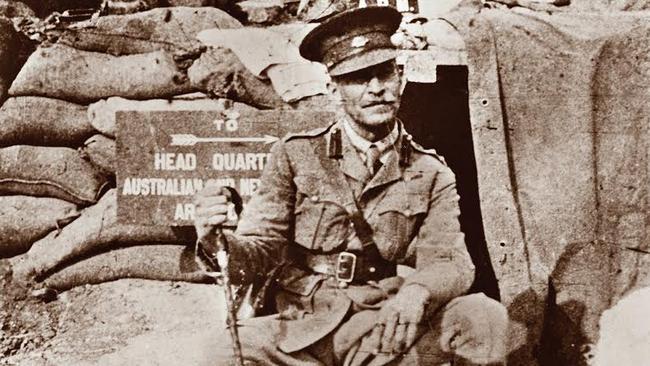Bush horseman became Australia’s highest ranked soldier
There was bad blood between Lawrence of Arabia and Australian commander Harry Chauvel, who was born 150 years ago today.

Today in History
Don't miss out on the headlines from Today in History. Followed categories will be added to My News.
When Lawrence of Arabia rode triumphantly into Damascus in October 1918, his victory was somewhat diminished by the fact an Australia commander had already taken control of the city.
That commander was Harry Chauvel. A commander of the Australian Light Horse, he was a veteran of the Boer War and had been at Gallipoli, Gaza and Beersheba, often playing a crucial role in major battles. He was one of our most accomplished military leaders in World War I, a boy from the bush who rose to be our highest-ranking officer after the war.
He was born Henry George Chauvel 150 years ago today, on April 16, 1865, at his father’s cattle station Tabulam in northeast NSW. His father Charles Henry Edward Chauvel was from a family with a proud tradition of military service.
As the second son, Harry dreamt of joining the British Army like his forebears, including his father who had served in India and often told stories around the fire at home. Harry would later admit his biggest military hero was actually an American Confederate General, J.E.B. Stuart, a cavalry leader.
Chauvel grew up to be a superb horseman aching to emulate Stuart’s prowess. He was educated at Sydney Grammar and Toowoomba Grammar before working on the family station.
When the family’s fortunes were affected by drought it scuttled plans for Harry to go to Sandhurst officer’s school in England, so he joined a local NSW volunteer force, the Upper Clarence Light Horse.
Harry was commissioned in 1886, but resigned when the family moved to the Darling Downs in Queensland in 1888. He was compensated with a commission in the Queensland Mounted Infantry in 1890. In 1896, he became part of Queensland’s permanent military forces, representing Australia as a member of the Queensland Jubilee Contingent in 1897, allowing him to train with British cavalry officers for a year. He commanded troops during the Boer War, leading the Queenslanders in their first action at Sunnyside and taking part in the siege at Ladysmith. He was mentioned in dispatches and appointed a Companion of the Order of St Michael and St George.
After Federation in 1901 he became a major in the newly formed Australian Army, organising mounted units and training officers.
In 1906, he married Sybil Campbell Keith Jopp, the daughter of a long-time friend and fellow officer. They would have four children.
He rose to the rank of Lt Colonel in 1909, then adjutant general in 1911. While on his way to London to represent Australia on the Imperial General Staff in 1914, war broke out in Europe. He requested to serve with the British Expeditionary Force but was ordered to take command of the newly raised 1st Australian Light Horse Brigade.
Chauvel requested that the Australian troops not be sent to England for the winter, suggesting they train instead in Egypt, which would ultimately result in them being sent to Gallipoli. His brigade remained in Egypt during the April 1915 Gallipoli landing, but later went in with reinforcements in May. His diligent, cool-headed leadership was vital in holding the frontline against Turkish attacks, earning a promotion to brigadier, and he led troops during the evacuation in December, after which he was promoted to major general.
Offered a posting in France, he chose to return to Egypt where his troops went into action against the Turks in April 1916. His calmness under pressure was crucial in helping to repel a Turkish attempt to capture the Suez Canal at Romani in August. The Anzac Mounted Division under Chauvel lost 202 men to the 1250 Turkish dead.
Having proved his troops desert- ready, they played a major role in actions in the Middle East, particularly Gaza and the legendary cavalry charge at Beersheba, which earned him a Knight Commander of the Order of Bath.
After the war he was awarded a knighthood, a French Croix de Guerre and an Order of the Nile.
Returning to Australia in 1919, he would become Inspector General of the army, then Chief of the General Staff in 1923.
It was a difficult time, because of post-war disarmament and the huge scaling back of military forces that worsened during the depression years, but Chauvel fought to maintain a minimum of forces and to keep officers well trained.
Chauvel was promoted to general in November 1929, the first Australian to attain that rank. He retired in April the following year.
When war broke out again in 1939 he again donned the uniform to train the Volunteer Defence Corps and advise the government on military matters.
He died in March 1945 and was given a state funeral.



